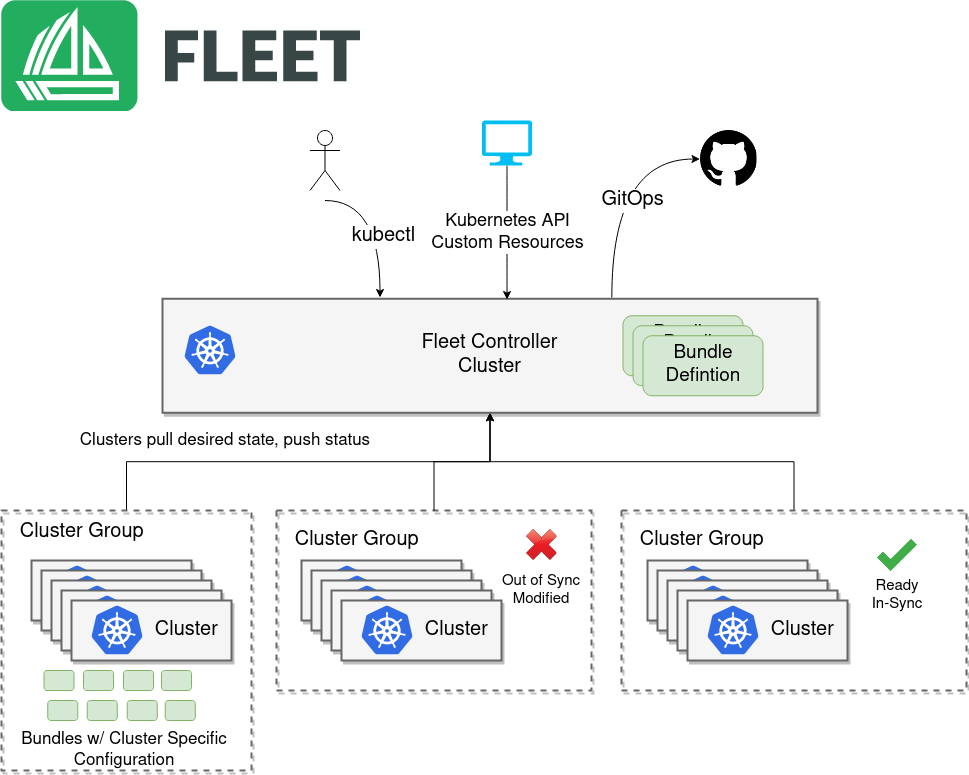Architecture

Fleet has two primary components. The Fleet manager and the cluster agents. These components work in a two-stage pull model. The Fleet manager will pull from git and the cluster agents will pull from the Fleet manager.
Fleet Manager
The Fleet manager is a set of Kubernetes controllers running in any standard Kubernetes cluster. The only API exposed by the Fleet manager is the Kubernetes API, there is no custom API for the fleet controller.
Cluster Agents
One cluster agent runs in each cluster and is responsible for talking to the Fleet manager. The only communication from cluster to Fleet manager is by this agent and all communication goes from the managed cluster to the Fleet manager. The fleet manager does not initiate connections to downstream clusters. This means managed clusters can run in private networks and behind NATs. The only requirement is the cluster agent needs to be able to communicate with the Kubernetes API of the cluster running the Fleet manager. The one exception to this is if you use the manager initiated cluster registration flow. This is not required, but an optional pattern.
The cluster agents are not assumed to have an "always on" connection. They will resume operation as soon as they can connect. Future enhancements will probably add the ability to schedule times of when the agent checks in, as it stands right now they will always attempt to connect.
Security
The Fleet manager dynamically creates service accounts, manages their RBAC and then gives the tokens to the downstream clusters. Clusters are registered by optionally expiring cluster registration tokens. The cluster registration token is used only during the registration process to generate a credential specific to that cluster. After the cluster credential is established the cluster "forgets" the cluster registration token.
The service accounts given to the clusters only have privileges to list BundleDeployment in the namespace created
specifically for that cluster. It can also update the status subresource of BundleDeployment and the status
subresource of it's Cluster resource.